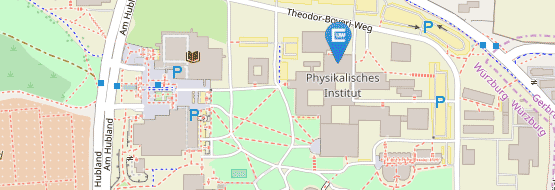B03
Detection and manipulation of topological and unconventional superconductivity in new materials
Summary
At the heart of this SFB 1170 is the study of the interplay of spin-orbit coupling and electron- electron interactions, which could allow for an unambiguous identification of topological supercon- ducting phases. In the second funding period, we have investigated signatures of p-wave pairing in thermal transport on proximity-induced superconductivity in two- and three-dimensional topological insulators (TIs). We have found that signatures of Majorana fermions in thermal transport are much more robust due to their neutral charge. Furthermore, we have studied new systems where Majo- rana fermions can intrinsically emerge based on the Luttinger models and Shiba states. In the third funding period, we will focus on two classes of systems: (1) non-equilibrium electrical and thermal transport in topological superconductors (2) new multiband low-dimensional systems with unconven- tional pairing. More specifically, in (1) we will study signatures of Majorana states in non-equilibrium electrical and thermal currents evolving from a couple of connected quantum dots to continuous models. We will investigate if there are observable differences between p-wave and s-wave or d-wave and f -wave order parameters in non-equilibrium transport. We will also address the question of how these different pairings compete in mixed pairing situations. Therefore, the central question for the next funding period will be to predict the orgin and behaviour of different pairings in non-equilibrium. For the second class of materials (2), the goal is to predict signatures of unconventional phases (for instance, in Kagome superconductors, Shiba states, two-dimensional multiband models with strong spin-orbit interactions and Sr2RuO4 ) using combined microscopic (functional renormalization group theory) and macroscopic approaches (theoretical predictions of realistic angular resoled photoemis- sion signals (ARPES), local density of states (LDOS) and atomic force/scanning tunneling microscope signals (AFM/STM)). Moreover, we will calculate the quasiparticle interference pattern from impuri- ties in these materials to further confirm the order parameter. While in s-wave proximitized TIs and systems with strong spin-orbit interactions unconventional superconductivity is mainly ruled by spin- orbit coupling, it is often driven by electron-electron interactions or lattice symmetry in the second class of materials. Therefore, on the one hand, we will address the fundamental physics question of which mechanisms lead to a robust formation of topological superconductivity. On the other hand, we will make predictions towards applications by constructing thermal devices from unconventional superconducting systems.


